Today, the leading position in science, culture and art is increasingly falling on the Chinese. The inhabitants of the Middle Kingdom do not leave any chance for Europeans brought up in greenhouse conditions. This is because education in China is study ten hours a day. Every day and all year.
Illiteracy defeated
The UNESCO Education for All report notes that by 2003, China came out on top in educational development. Launched in 1985, education reform has produced tangible results. A number of legislative acts of the government promoted compulsory literacy training for all residents, the development of higher education, an increase in the number of foreign professors in universities and the influx of students from other countries. So, from the 80s, compulsory primary education was introduced, in the 90s, nine-year education became compulsory.
One of the main indicators of the effectiveness of the fight against illiteracy is the percentage of women aged 15-24 who do not even have primary education. In China, it is 4%. Compare with India, where it is 44%, and in fairly Europeanized Turkey - 8%.
The percentage of illiterate adults in the Middle Kingdom today is about 4%. And back in the 50s of our century, 80% of Chinese were illiterate. Young people aged 15-24 years old are 99% literate in China.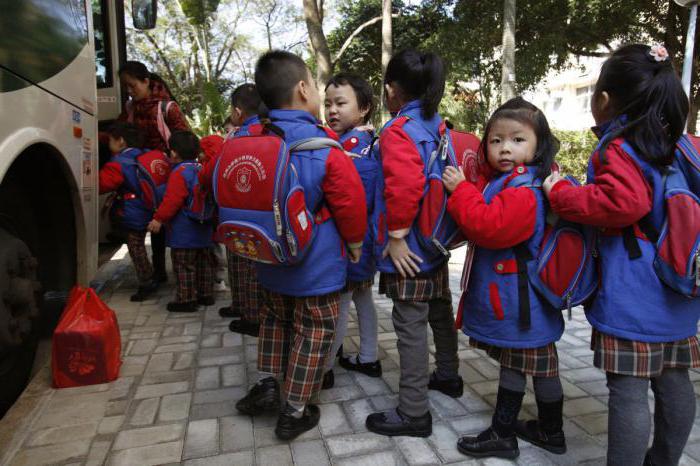
Education growth is the key to success
Another indicator indicating that the level of education in China is growing rapidly is the number of specialists with higher education per 100 thousand people. 20 years ago, this figure was 600 graduates for every 100 thousand people. The Ministry of Education of the Celestial Empire plans to achieve an indicator of 13.5 thousand specialists by 2020.
In 1949, there were 205 higher education institutions in China. Today there are about 2 thousand of them with the number of students of 20 million people.
Education system in China
The structure of obtaining knowledge of the PRC is not different from most European. It includes the following steps:
- Preschool (children from 3 to 5 years old).
- Elementary school and incomplete secondary (6 + 3, 5 + 4 or 9-year-old systems).
- High school (three-year education).
- Specialized secondary education (2 years after secondary school, or 4 years after incomplete secondary).
- High school.
The education system in China today provides for compulsory nine-year education (the level of incomplete secondary school). Further, graduates either receive a special education or become university students. Or they stop further education.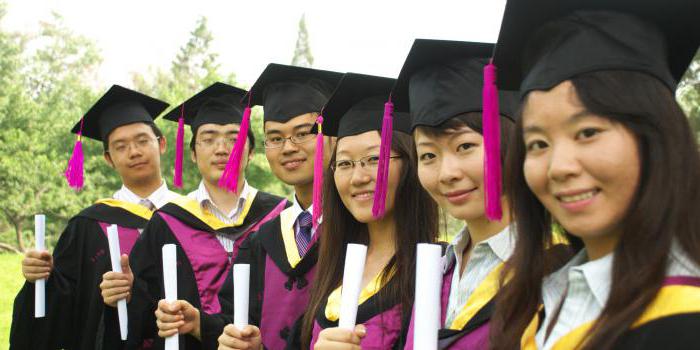
Before school
Preschool education in China is a network of public or private institutions. The country's legislation is aimed at supporting the private sector in this field of education. The Ministry of Education has approved a unified program of preschool education. But while in the state structures the priority is the preparation of children for school and labor education, then private preschool institutions specialize in aesthetic, cultural and child-oriented education.
In general, the day of a Chinese preschooler is similar to the same day as a Russian child. The distinctive features of the educational process that characterizes education in China before school can be considered the following:
- Morning in kindergarten - flag raising time. Love and pride in the country has been cultivated since preschool age.
- Accustoming to work consists of the fact that educational institutions have vegetable gardens where preschoolers learn to grow vegetables. And even sometimes they are cooked.
- Even children's games are subject to strict discipline. Free time is idle time, and this is simply not in China.
Strict discipline, combined with control that does not allow the child to even think that he is special, is often criticized. But for the Chinese, the rule "what is good for the state, good for man" is an unshakable rule.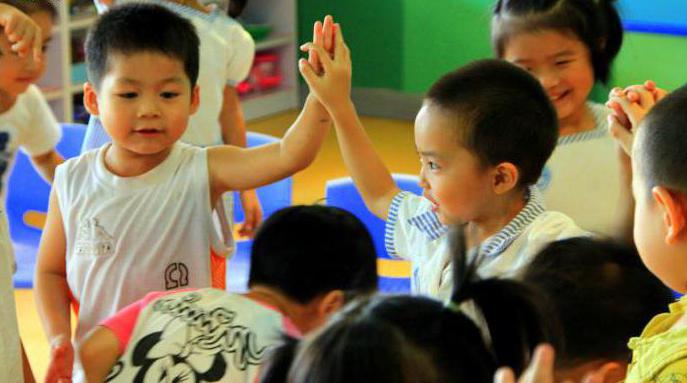
Most kindergartens are open until six in the evening, but there are those where children can stay around the clock.
Elementary school and junior high
This piece of training is required. It is paid by the state. The elementary school takes 6 years of study, and the secondary one - 3. The program includes the study of the Chinese language (in-depth), mathematics, history, natural history, geography, and music. The variable part is ethics, morality and the legal part. Evaluation is carried out in the form of tests, according to a 100-point system.
Mandatory is the practice when children work for several hours a week on mini-enterprises or farms.
Idleness here is considered unacceptable. The load on children is huge, homework is required. Even on vacation, children do their homework, which is quite voluminous.
The discipline is very strict, the gates of the school open only to let children in and out. There is a general school uniform for students in each school. For skipping classes without an important reason - deduction.
Interesting! In schools, the morning begins with charging and a ruler with the mandatory raising of the flag. There is also a daily exercise, and in the middle of the educational process - gymnastics for the eyes using acupuncture methods. After lunch, which lasts an hour, 5 minutes are provided for sleeping.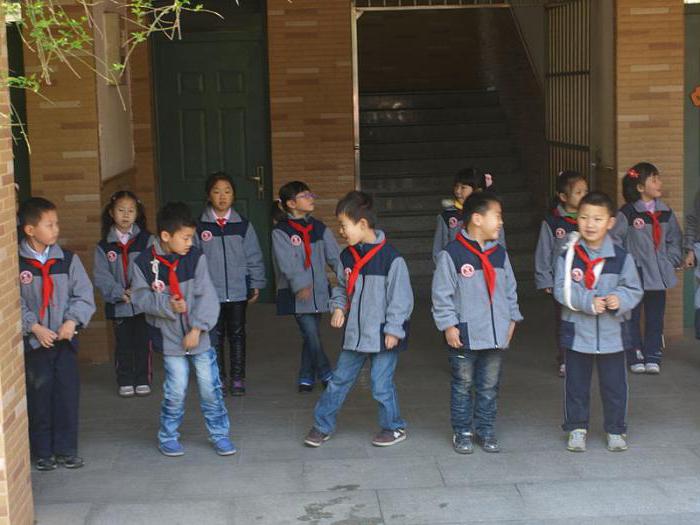
High School and Special Vocational Education in China
After high school, if a child chooses a certain direction and family finances allow, you can continue to study for 3 years in high school.
There are two types of high schools:
- Academic. These are specialized schools, the main task of which is to prepare a student to enter a university in a chosen direction.
- Professional and technical. Here workers are trained for certain types of work.
You can enter a vocational school after graduating from an academic high school. Then the child will have to study in it less - two years instead of three.
You can enter a university only after graduating from high school. At the same time, the points that the student will receive in a single final exam determine the hierarchy of the future university, because they do not pass exams upon admission - everything determines the grade of the high school.
Higher Education in China
In 64 countries of the world, diplomas obtained in Chinese universities are recognized. Russia among them.
All top-level establishments have their own hierarchy established in a single rating. The high school graduate’s single exam score determines which institution he can enter - the “highest level” or the provincial level. The admission of an applicant is a celebration of the whole family, even if the child enrolled in paid tuition. State scholarships and subsidies from customer enterprises are often assumed for students, which often incur the costs of training specialists.
High School of China is:
- Colleges with a two-year (certificate of an intermediate level specialist) and four-year (bachelor's degree) program.
- Higher education institutions (bachelor, master, doctor of sciences), usually with a narrow specialization. Specialists are trained in 820 specialties.
Training is conducted in English or Chinese of choice. The system of the educational process is semester with winter and summer holidays.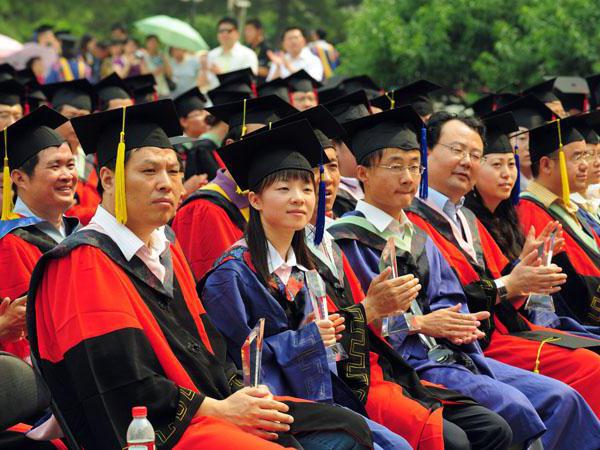
For gifted Chinese, winners of national competitions and contests, as well as for children from low-income families, there are budget places, but there are very few of them, and the competition is very high.
The international authority of China's high school system has long won. At scientific universities, the Chinese are represented quite widely in America, Australia and Europe. About 20 thousand Chinese graduate from postgraduate and doctoral studies outside of China annually.
The most popular universities in China
QS (2017) rated 4 Chinese institutions in the top 100 universities in the world: Peking University, Shanghai Jao Tong University, Fundai and Qingau Universities. And in some disciplines (engineering and information technology, chemistry and others), Chinese universities are leaders in world rankings. For example, Shanghai University of Transportation Communications (Jiaotong) leads the way in engineering technology.
Nine leading universities in China have entered an educational project called the K-9 Group. This group is comparable to the well-known Ivy League in America. The costs of scientific research and technical development in this group are fully funded by the state, and this is 10% of the annual budget! In addition to the already mentioned four ranking universities, the Chinese “ivy league” includes Nanjing, Zheng universities, China University of Science and Technology (Beijing), Xi'an Jiaotong University (Beijing), Harbin Institute of Science and Technology.
By the citation of articles and the number of patents for inventions, China is in third place, after America and Japan. But with such state support, providing a fast growth rate of education and science, the likelihood of China's rating increase is quite high.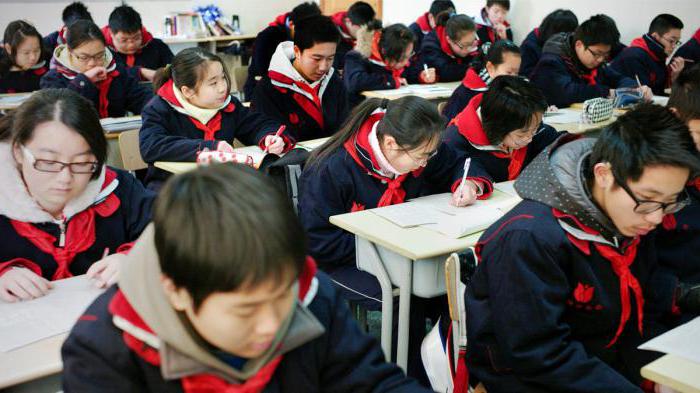
Education in China for Russian students
Studying in China is not such an unattainable goal as it seems. There are many educational programs and agreements between universities in Russia and China. A student exchange system has been developed, and of course, it is easier for someone who is already a student to get to study in China.
For graduates wishing to enter the universities of the Celestial Empire, a certificate of graduation will not be enough. In addition, you must pass the Hanyu Shuiping Kaoshi language exam upon admission. The largest universities establish their additional rules, like additional testing or age limits.
In any case, preparation for admission involves an individual selection of the university and careful preparation of documents according to the requirements of a particular educational institution.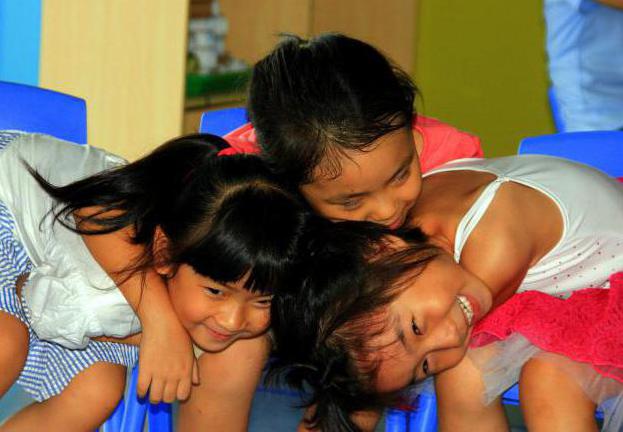
Total
The whole world has long "swept the eastern boom." Learning Japanese and Chinese is growing steadily. An increasing number of young people are embraced by interest in the history and traditions of the countries of the East. Our neighbor - the largest country in Asia - is increasing its influence in various spheres of life of the world community. A breakthrough in the economy and a victory over illiteracy make us think about the exceptional features of education in China as a component of China's success.